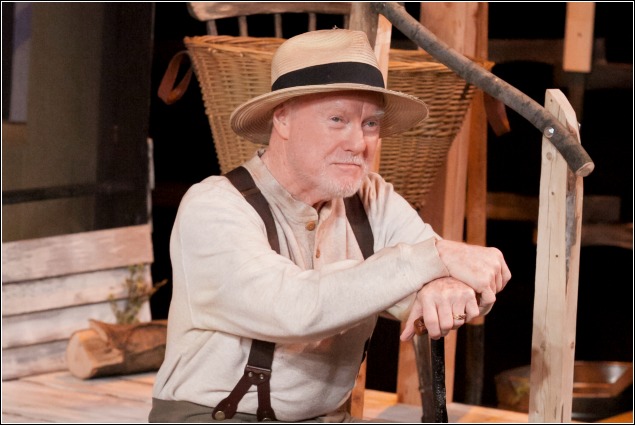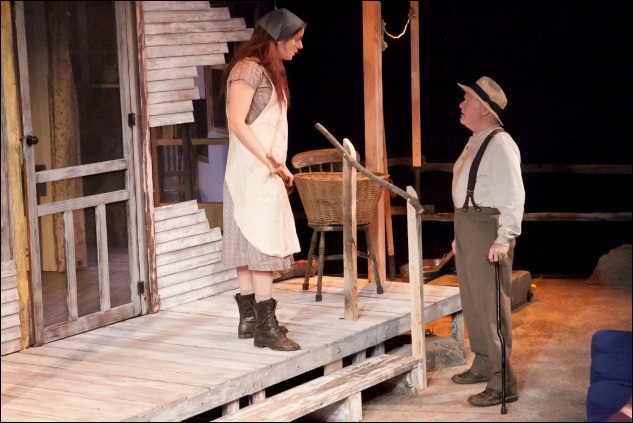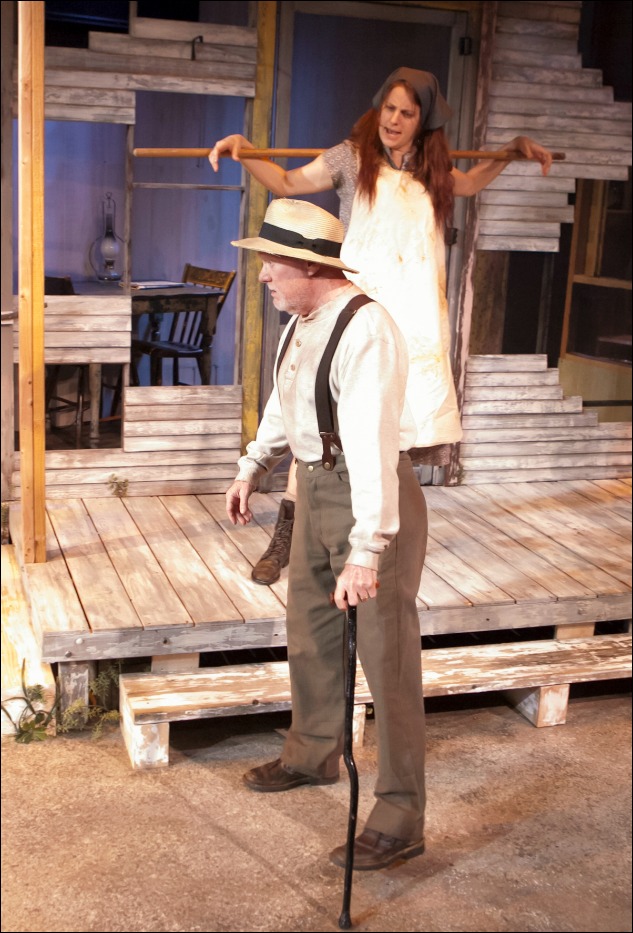
Michael Toner, one of Philadelphia’s best-known actors, has appeared on the stage for decades. Like many actors, he has never had any desire to do anything else, and that’s what he thought he was always going to do.
That confidence was shattered sometime before 1 a.m. on Tuesday, June 9.
Toner, 69, was struck by a hit and run driver and critically injured on 11th Street below Market in Center City Philadelphia. The force of the collision severed his left leg above the knee. Toner doesn’t remember anything about the accident, though he recalls what happened before.
“I was in the middle of [the run of] a one-man play, ‘Crossing the Threshold into the House of Bach’ by David L. Simpson, at St. Mary’s Episcopal Church on the Penn Campus,” he says. “I was going to catch my commuter train home.” How long Toner lay in the street isn’t clear, but he says he owes his survival to a passing Good Samaritan. “A homeless man found me and called an ambulance.”
An ambulance rushed Toner to Thomas Jefferson University Hospital. By the time he got there, doctors told him later on, he had lost nearly 49 percent of his blood volume.
Long Haul
Toner’s recovery has been a long haul. In the beginning, he was racked by doubt. Would he ever walk again? More to the point—would he ever walk on stage again?
“My first thought,” he recalls, “was that I was going to be in a wheelchair the rest of my life.” The medication used to help ease his pain at times also clouded his judgment. On the one hand, the drugs did just what they were supposed to do—helped him cope with the pain—but on the other hand, they induced nightmares of Toner’s days in Vietnam. He served with the 11th Armored Cavalry Regiment from 1967 to 1968.
In March, he had auditioned for the role of fractious tenant farmer Phil Hogan in Eugene O’Neill’s classic “A Moon for the Misbegotten,” which is scheduled to open January 12, running through February 7, at Walnut Street Theatre. “I had done the role in the ‘90s,” he says. “I auditioned for it, and the audition went great. And then a few months later, the accident happened.”
At that point, he was doubtful, not just that he could recuperate and rehabilitate in time to do the play—or indeed any play ever again—but whether the theatre company would still want him.
“I told them, this is professional theatre,” says Toner. “People are paying money. If you want to replace me with the understudy, that’s OK.”
The theatre company dispelled that notion early on. “One day, Bernard Havard (the Walnut's president and producing artistic director), visited and he said to me in his British accent (which Toner goes on to reproduce flawlessly), ‘You know, Michael, you’re still under contract.’”
Holding Pattern
Looking back on Toner’s early days in the hospital, director Kate Galvin said she initially had concerns that he might be ready in time. “I just had no idea what to do,” she says. “I was in Texas when I got the call, telling me about his accident. I knew I didn’t want to make any decisions until we got more information. We were in a holding pattern.”
But, Galvin says, there was never any talk of a replacement. “He just killed it,” she says. “He really knew the character. Michael had just the right touch to play that part in a way that was both tough and loving. That’s a hard thing to do.” Given that, she says, there was never a question in her mind who she wanted for the role: It was always Michael Toner.
That was all the encouragement Toner needed. As his doctors, nurses, therapists, friends and family were soon to discover, he was made of sterner stuff.
Toner remained hospitalized six weeks at Jefferson before he was transferred to MossRehab for an additional 10 days. He was sent home to recuperate, giving his leg time to heal in preparation for his prosthesis.
After that, it was back to MossRehab for another two weeks in late September. He was fitted for a prosthetic leg, and since October he has been relearning how to walk at MossRehab on a rigorous, twice-weekly basis.
Toner is sure that rehab is a rough go for many people who have experienced the trauma of losing a limb. Depression is certainly not an uncommon reaction.
But he decided early not to give up. It was an advantage, he says, of “having this goal of going back on the stage and doing O’Neill again, doing this play again.”
So he threw himself into rehabilitation with discipline and devotion.

Embracing the Challenge
MossRehab occupational therapist Drew Lerman said he didn’t have any doubt about Toner’s dedication to rehab, but he admits to a bit of apprehension about his patient’s ambitious goal. “The time frame was short,” Lerman says. He remembers telling Toner, “Usually the time frame for healing is several months. Given how your leg looks now, it looks do-able … but it won’t be easy.”
Toner embraced the challenge.
“He’s probably the most positive person you’d ever want to meet,” says Lerman. After such a devastating accident, he says, there are “a lot of horrific things to think about—a lot of things to feel sorry about.” Lerman says Toner never showed any signs that he felt any of those things.
Over time, Lerman says, Toner has become more adapted to walking with a prosthetic leg and a cane, but, as he says, it’s not easy. With an amputation below the knee, Lerman says, it’s easier to sense where your foot is going. But Toner’s amputation, because it was above the knee, makes sensing how and where your foot is touching the ground more difficult. “It has a lot to do with how the knee works,” he says. “Mike is getting there, but it’s hard.”
There’s now no question in Toner’s mind that he is ready. But before rehearsals began last week, there was one more unanswered question—would the Walnut Street Theatre stage be ready for him?
In late November, his physical therapist Alba Seda-Morales (PT) and Lerman (OT) visited the theatre to meet with Galvin, along with the stage manager, scenic director and costume designer to check out the set and backstage, and to talk through concerns about issues such as stray cables and wires, steps, and lighting. They discussed a scene that requires Toner to quickly make his way downstairs backstage, up one floor in an elevator and navigate around to the back of the theatre hall. They even needed to have Toner’s prosthesis adjusted for the boots he would be wearing onstage.
Ongoing Conversation
As Toner continues rehearsals, Galvin says, “That’s an ongoing conversation. We’re still making modifications.”
In addition to the challenge of set modifications, there’s one other thing to think about: making sure that the changes made onstage don’t distract the audience and their understanding of his character. “We have to make the set safe,” she says, “but we have to make sure everything is consistent with the play.”
For example, Galvin says, O'Neill had not written Phil Hogan to walk with a limp or a cane, so the actors and director had to creatively find a way to integrate this obvious feature as part of his character. "It's important that the audience immediately understand this is part of Phil Hogan," says Galvin, "so they aren't distracted wondering if they are supposed to ignore Michael Toner's distinctive gait."
As for the cane, she adds with a smile, “He’s a crotchety old man, anyway. I’m sure he’s been kicked by a horse a few times. And he makes the cane a weapon so he can still be threatening, even if he’s not moving.”
If all goes well, no one will notice the changes, and Toner will be free to do what he does best: act.
MossRehab’s Drew Lerman is confident that Toner will do just that. He admits Toner might face a bigger challenge than other actors do, but in the end, people in many other professions who have lost a limb face the same challenge.
“Mike’s my first stage actor,” Lerman says, “but he’s learning to return to work, just like everybody else. He just happens to have a unique job.”
